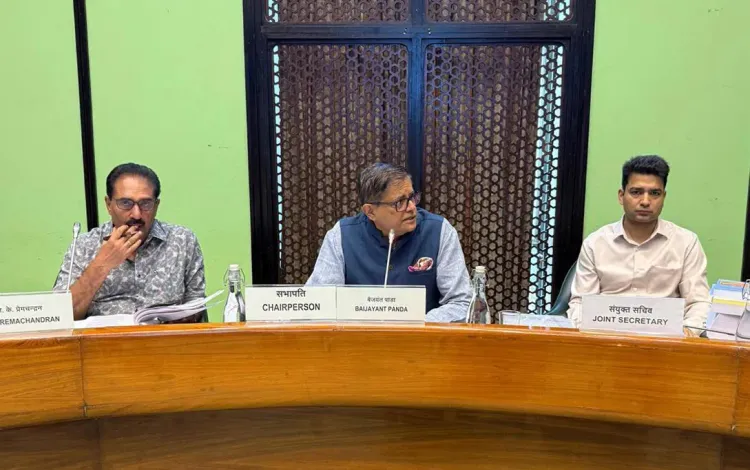Has the Lok Sabha Panel Endorsed the Income Tax Bill for the Monsoon Session?

Synopsis
Key Takeaways
- New Income Tax Bill-2025 aims to simplify tax laws.
- Implementation planned for April 1, 2026.
- Word count reduced by nearly 50%.
- Chapters cut from 47 to 23.
- Sections reduced from 819 to 536.
New Delhi, July 16 (NationPress) The Select Committee of the Lok Sabha, tasked with reviewing the Income Tax Bill-2025 and led by BJP leader Baijayant Jay Panda, has officially approved the draft report along with the suggested amendments. This report is set to be introduced to Parliament on Monday, coinciding with the commencement of the monsoon session.
According to a committee member, the report will be presented to the Lok Sabha on Monday, and there are expectations that the bill will pass during this session.
Following the committee's report submission, the government will assess its recommendations, aiming for the new Income Tax law's implementation by April 1, 2026.
The Income Tax Bill, 2025, is designed to replace the decades-old Income Tax Act of 1961, simplifying direct tax laws, eliminating ambiguities, and reducing potential tax disputes.
This simplification process is founded on three core principles: enhancing textual and structural clarity, ensuring continuity with no significant tax policy changes, and maintaining tax rates for predictability for taxpayers, as stated by the finance ministry.
Incorporating global best practices, the bill intends to facilitate business operations by offering a straightforward tax framework. This has led to a remarkable reduction in the volume of the Act, making it more streamlined and user-friendly. The word count of the new Income Tax Bill has dropped to 259,676 from a staggering 512,535 words in the current Income Tax Act, representing nearly a 50% reduction of 252,859 words, according to an official statement.
Consequently, the number of chapters in the new Income Tax Bill has been reduced to 23 from 47 in the existing Income Tax Act. Similarly, the sections have decreased to 536 from 819, resulting in the removal of 283 sections.
This significant reduction has been achieved through language simplification, making the law more accessible, while consolidating amendments has lessened fragmentation.










